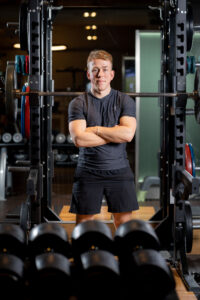After a wet and cold winter and spring, we now head into winter with a decrease in temperatures, which brings with it challenges as well as happiness for those who enjoy colder weather. Many people find it hard to find the motivation to train in the cold, and this can often mean that consistency is difficult to achieve.
Although it may be uncomfortable when you start, there are several benefits to training in colder weather. Firstly, it forces your body to work harder during training, and this also applies to your cardiovascular system. As the heart works harder to pump blood around the body during cold weather exercise, training hard helps to maintain excellent health of your hard.
However, there are some things you need consider when you train in cooler temperatures, so that you maintain consistency and achieve great progress?
Remember Your Goal
It can be very easy to lose motivation when temperatures start to decrease. As mentioned before, stepping outside, and committing yourself to the session is often the most difficult step. However, getting to that point takes mental discipline, clarity, and purpose. This is where your goal comes in. Why did you decide to start training? What are the deep, emotional reasons behind you wanting to be in shape?
This should be what drives you, inspires you and energises you. You may not be inspired by the training itself (although this helps) but your goal should be extremely inspiring. You then need to link each task to that goal and realise that you will not get there without training. So, never lose sight of what you are trying to achieve and why you are doing it.
Wrap Up Warm
During the first part of your session, your body will not be used to the temperatures, so it is important to wear the appropriate clothing. Not only will this keep your body warm, but it will give you more confidence to enter the cold and start training. This is going to be key for consistency and a positive mindset during your journey.
Recommended clothing includes thermal wear (tops and underwear), tracksuit bottoms, tracksuit top, a thick hat, and a pair of gloves (if required). There are some excellent clothing brands that design their gear for cold weather, and it is worth investing in if you are short in this area.
Train At Your Preferred Time
The most important point is to organise your time. Planning is key to progression in any walk of like and getting in shape is no different. Take some time and decide which time is best for you to do your resistance training. This is dependent on individual preferences – some people like to train first thing in the morning or during their lunch break, while others like to get their work out of the way before a session in the evening. If you are not sure what time is be best for you, then experiment. Try different times and see which one is the most favourable for you and your situation.
Warm Up Well
Before you start lifting and training, it is very important that you get in a substantial warm-up first. The importance of this will depend on the individual and how much they have been training during lockdown – if you have been training well, then your body will be well-adapted, but if this is your first training session in a long time, your body will be much stiffer and not used to resistance-based exercise.
However, it is vital that you have blood flowing into your muscles, so that you are more flexible and your muscles are warmed and loose for the training ahead. Make sure your warm-up is based around dynamic stretches (stretches that require continued movement) so that your body is ready. Aim for 2-3 dynamic stretches which focus on mobility and flexibility, including bodyweight practice for the upcoming exercise. Then, once you start training, the movement should feel smoother and you will reduce the risk of a muscle injury.
Keep Moving
Finally, it is vital that you keep your body moving throughout your workout. Whilst you will be active when performing each exercise, there will be periods of rest in between each set, which should last anywhere form 30 seconds to a minute. If you do not feel warm quite yet, particularly early into your workout, moving around the room or even jogging on the spot can be a great way of warming up quicker.
As you progress into your session, you should find that your body adapts well to the temperatures. However, an active body will help circulate blook to vital areas and ensure that your muscles are less stiff, meaning that the quality of your execution should improve.
Summary
So, if you are worried about being able to stick to your training in colder weather, there are things you can do to help. These include remembering your goal, wrapping up warm, training at your preferred time, warming up well and keeping on the move. If you can integrate these tips into your routine, you should find that your training becomes much more manageable.
Photo Credit: Envato Elements


